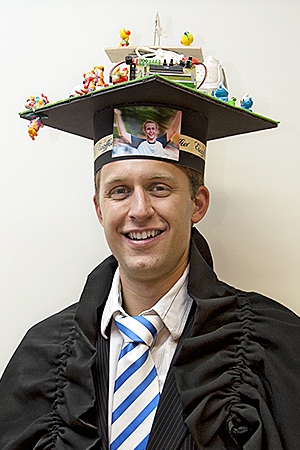Björn Eskofier
Application of Pattern Recognition Methods in Biomechanics (external: University of Calgary, Canada)
Abstract
Biomechanical studies often attempt to identify differences between groups. Several scientific methods are available for identifying such differences. Traditional methods often focus on the analysis of single variables and do not take into account high-dimensional dependencies. Moreover, the analysis procedures are often biased by the expectations of the researcher. Pattern recognition based methods provide data driven analysis often conducted simultaneously in multiple dimensions. Such algorithms have recently been applied for biomechanical analysis tasks. However, the use of pattern recognition algorithms is still not well understood in the biomechanical community. Therefore, the contribution of this thesis was to add further understanding of tools from pattern recognition to biomechanical tasks of group differentiation.
Two main application scenarios were addressed. In the first part of the thesis, questions of human gait classification were examined. Existing studies with respect to this task had two main shortcomings. First, the features used for classification were often specific to the input measurements, derived from specific time points and thus not directly transferable to different tasks. Second, frequently only information from single variables was analyzed and high-dimensional dependencies neglected. Therefore, techniques for running and walking gait pattern classification were developed that overcame these shortcomings. They employed generic features that used a more complete representation of the available information compared to traditional methods. Moreover, high-dimensional dependencies were accounted for. Several group classification tasks were successfully solved using the developed methodology. The techniques are general and applicable to different group classification tasks without adaptation.
In the second part of the thesis, the implementation of pattern recognition algorithms on embedded systems was considered. Such systems allow, for instance, the application of pattern recognition systems outside the lab for sports biomechanics as well as for many other domains. General considerations for the implementation of pattern recognition algorithms on this specific hardware environment were still missing in the literature. A general methodology for embedded classification was therefore developed. The ability of this approach to produce acceptable results in sports biomechanics related classification tasks was shown. Furthermore, the applicability of embedded solutions for data collection in sports classification studies was demonstrated.
